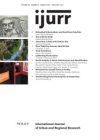Discussions about socio‐spatial integration in the US have been primarily focused on research into residential segregation. The treatment of these two concepts as opposites has had two consequences. First, most policies for integration have been based solely on concepts of segregation. Second, the intensive criticism directed at integration flows more from those policies than from its conceptual meaning. This article develops a framework for socio‐spatial integration. It does this first by outlining an understanding of segregation and the complexities of its treatment, then by making a distinction between policy applications and the conceptual meaning of integration. This review shows that, rather than suiting a linear approach, socio‐spatial integration can be expressed as a multidimensional relationship that may work independently and at different scales. Socio‐spatial integration is then exposed as the opposite of social exclusion, of which physical proximity between different social groups is just one dimension. Two lines of research are proposed: first, a repositioning of integration as a progressive aspiration and a critique of naturalist conceptions; second, a balancing of the weight of spatial proximity among the different dimensions of integration.
Details
Written by:
Javier Ruiz‐Tagle
Digital Object Identifier (DOI)
10.1111/j.1468-2427.2012.01180.x
About DOI
Read full article as PDF
Read full article as HTML
See the references for this article
